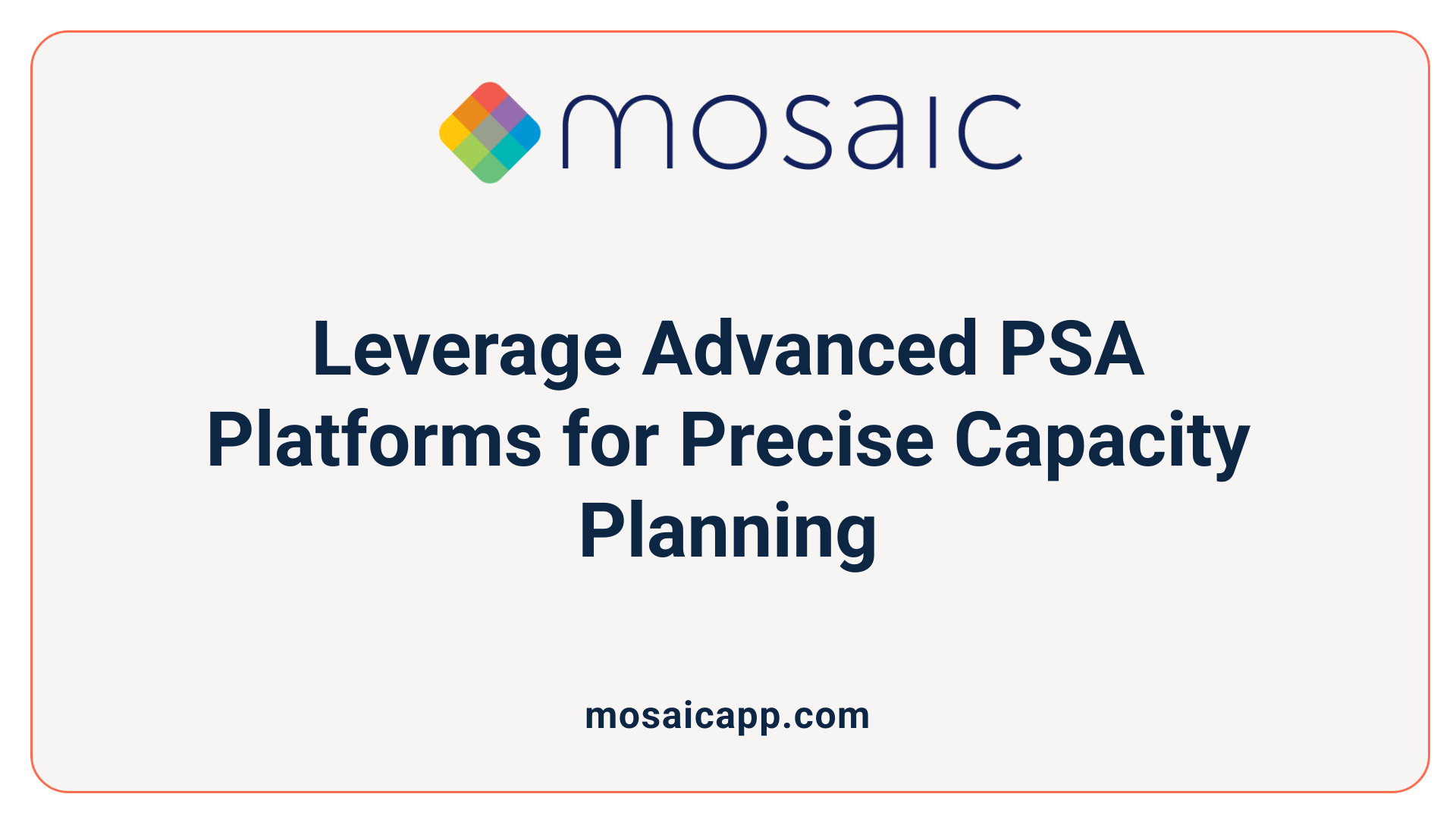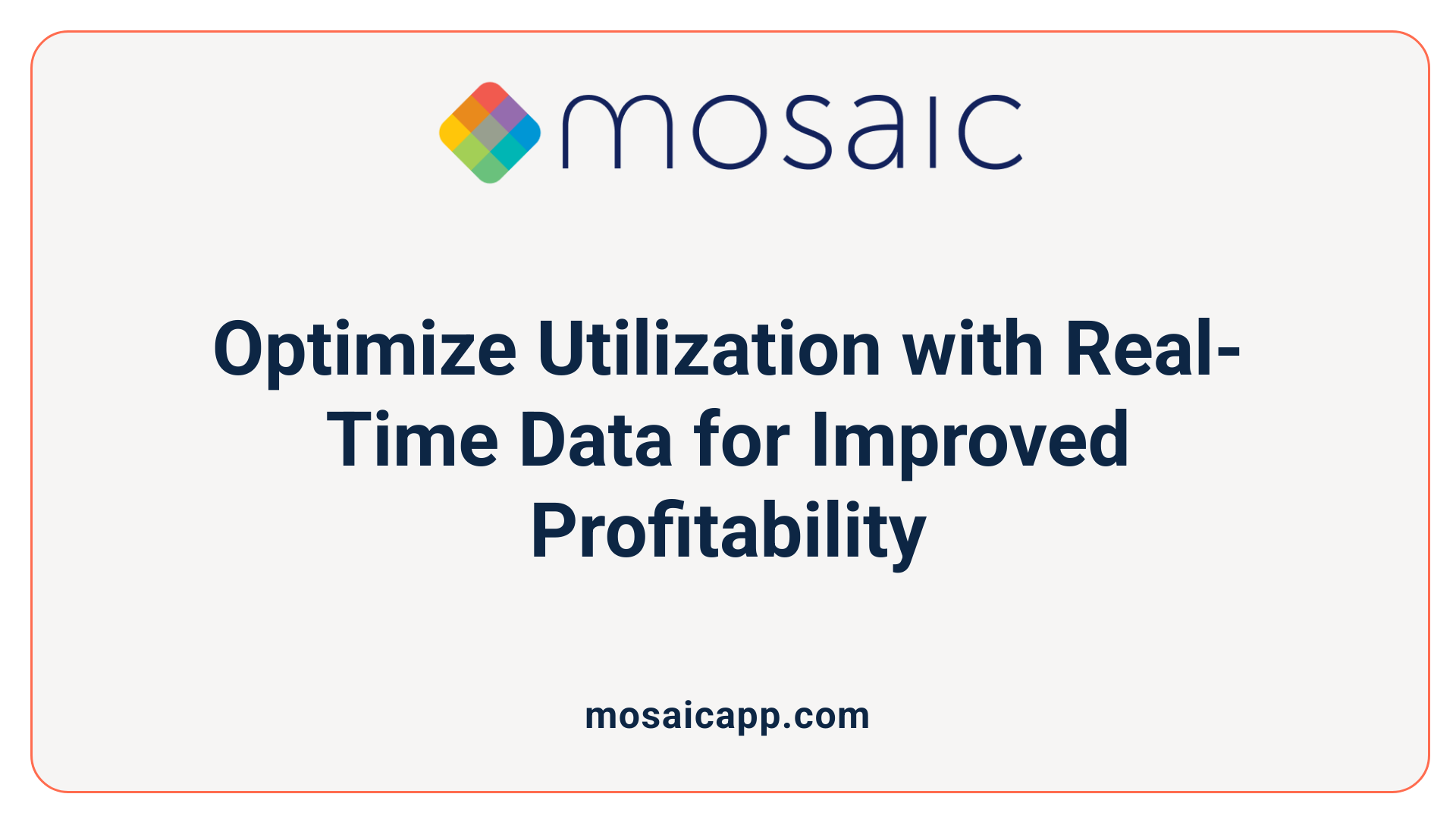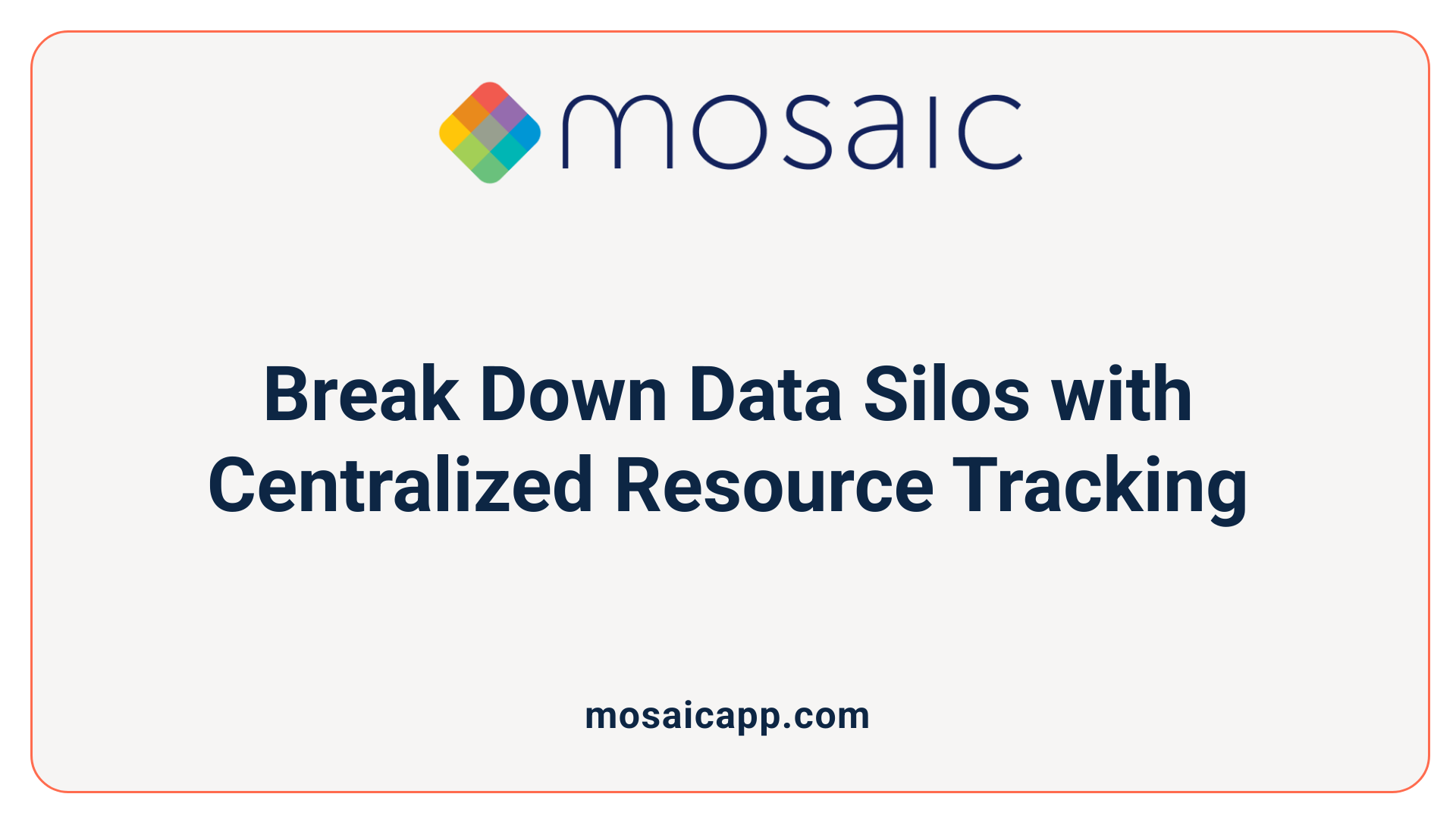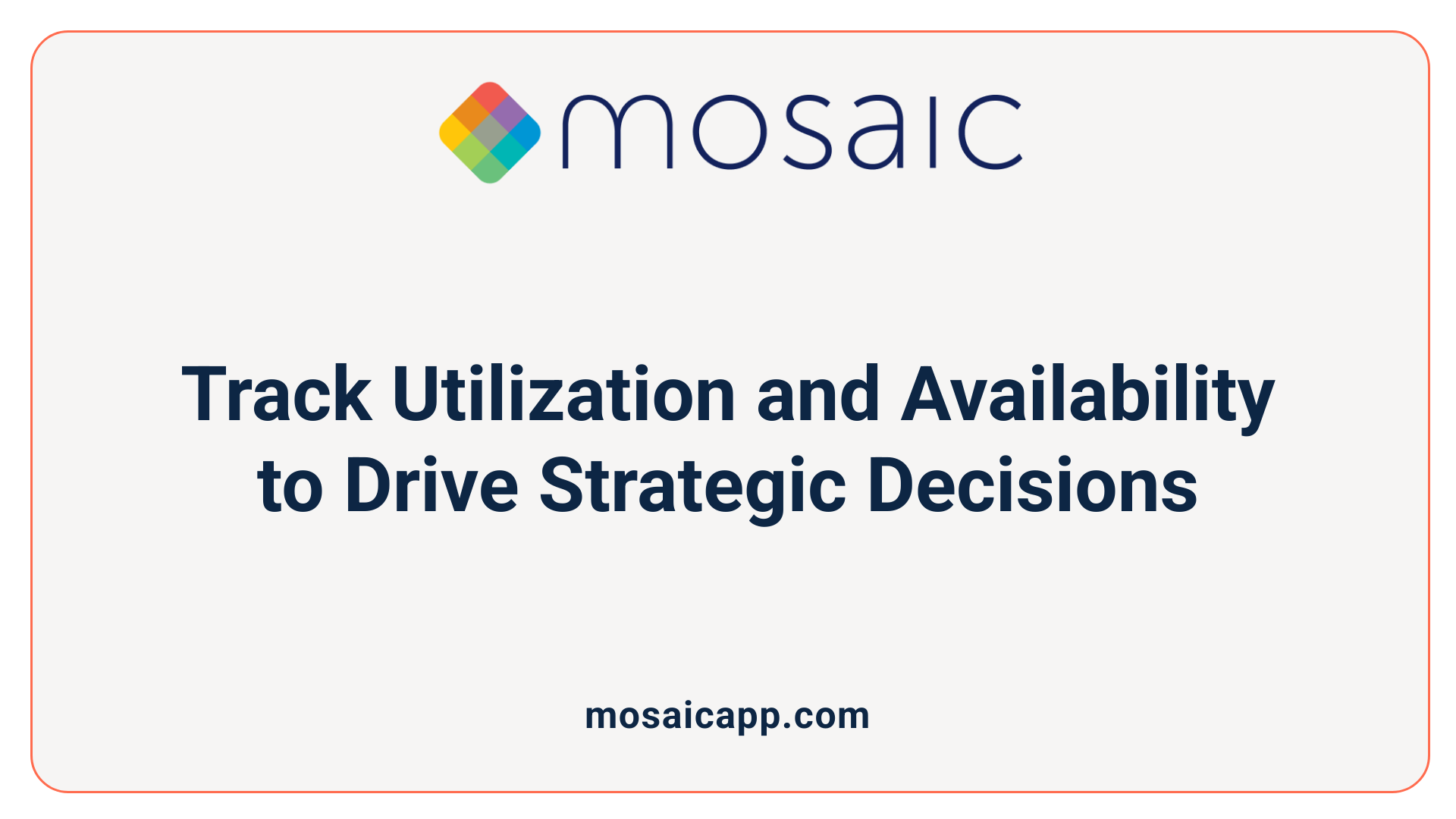Why Workload Visibility Matters More Than Ever
In the fast-paced and dynamic world of consulting, managing resources effectively can make or break project outcomes. Consulting leaders today face mounting pressure to deliver projects on time, maintain high utilization rates, and avoid burnout among valuable team members. The secret weapon? Real-time, transparent visibility into workloads across individuals, teams, projects, and the entire company. This article explores why such visibility is a true game changer for consulting leaders, enabling smarter decision-making, optimized resource allocation, and sustainable growth.
The Multi-Level Impact of Visibility on Workload Management
Why is visibility into consultant availability important at multiple organizational levels?
Visibility into consultant availability must function across individual, project, team, and company-wide levels to ensure well-rounded workload management.
At the individual level, managers can assess specific consultants' workloads and availability, preventing overbooking and burnout. Project-level visibility helps track resource commitments and timelines, making sure deadlines are realistic and resourcing gaps are spotted early.
Team-level insight provides a broader view by balancing workloads across members, enabling better collaboration and supporting flexible task redistribution when needed. Finally, company-wide visibility allows leaders to monitor resource capacity against strategic priorities, supporting informed hiring and pipeline planning.
This layered approach facilitates better workload management by offering nuanced perspectives that align short-term project needs with long-term organizational goals. Resource allocation becomes more targeted and efficient, as staffing decisions are based on real-time data combined from multiple organizational layers.
Effective tools like PSA platforms integrate data to deliver this comprehensive visibility, enabling managers to forecast capacity accurately and assign the right skills to the right projects. Consequently, companies achieve improved utilization rates, enhanced profitability, and reduced risk of resource bottlenecks.
In essence, multi-level visibility transforms resource management from reactive firefighting into a strategic, proactive process that safeguards project success and consultant well-being.
Harnessing Modern PSA Tools for Accurate Forecasting and Staffing

How do PSA tools support forecasting consultant availability?
Professional Services Automation (PSA) tools have become essential for accurately forecasting consultant availability. By synthesizing data from multiple sources—such as project allocations, pipeline opportunities, and time tracking—these tools provide a comprehensive picture of current and future workloads.
Through this integration, PSA systems help leaders forecast when consultants are likely to become available, identifying upcoming project roll-offs in advance. This visibility prevents the common issue of overbooking resources, ensuring that no single consultant is stretched beyond capacity.
Moreover, with insights drawn from pipeline data, managers can anticipate new project demands and plan hiring or internal staffing adjustments proactively. This foresight helps maintain balanced workloads and avoids last-minute resource shortages.
By centralizing resource data, PSA platforms streamline the forecasting process, reduce manual errors, and empower organizations to make confident staffing decisions aligned with actual capacity and business needs.
Tracking Billable vs. Non-Billable Hours to Enhance Transparency
Tracking Sales Efforts and Non-Billable Work via Internal Projects in PSA Tools
Professional Services Automation (PSA) tools enable firms to create internal projects specifically designed to capture non-billable activities such as sales efforts, training, or administrative duties. This approach allows organizations to log time spent outside direct billable client work, ensuring these hours are not overlooked.
Transparency into Non-Billable Activities
By categorizing non-billable tasks in PSA systems, managers gain clear visibility into how consultants allocate their time across all responsibilities. This transparency highlights the true workload consultants handle, including behind-the-scenes tasks essential for business growth and sustainability.
Impact on Workload Insights
Understanding the distribution between billable and non-billable hours allows firms to assess workload balance accurately. It uncovers hidden demands on resources and prevents underestimating the effort needed for projects. Consequently, leadership can make informed staffing and capacity decisions to support both client delivery and internal activities effectively.
How can tracking billable and non-billable hours improve workload visibility?
By creating internal projects within PSA systems, firms can track non-billable sales and other efforts, leading to clearer understanding of workloads and resource demands beyond billable hours. This comprehensive tracking supports better workload management, ensuring resources are neither overburdened nor underutilized.
Accelerating Project Staffing with Skill-Based Filtering and Automation
What role does filtering by skills and automated suggestions play in project staffing?
Effectively staffing projects hinges on the ability to quickly pinpoint consultants whose skills and roles align perfectly with project needs. Modern resource planning tools facilitate this by enabling rapid filtering based on specific roles and skill sets. This targeted approach ensures that only the most suitable consultants are considered, reducing the time spent sifting through unsuitable candidates.
Using automated suggestion systems
Beyond basic filtering, automated suggestion systems take staffing efficiency a step further. These systems analyze consultants' availability, skills, and prior project experience to generate recommendations for the best talent matches. Such automation speeds up decision-making by cutting down manual assessments and helps avoid staffing delays.
Speeding staffing and improving talent-project fit
Combining skill-based filtering with automated suggestions accelerates staffing processes dramatically. Staffing managers can swiftly identify and assign the right consultants, improving the overall fit between talent and project requirements. This streamlined approach not only saves time but also enhances project outcomes by ensuring the right expertise is applied to each task.
In essence, leveraging filtering by role and skills alongside automated staffing recommendations transforms resource management into a dynamic and efficient process, enabling firms to staff projects quickly and effectively while optimizing consultant utilization.
Real-Time Resource Utilization Visibility Drives Profitability

How does real-time visibility into resource utilization benefit consulting firms?
Having real-time visibility into resource utilization allows consulting firms to monitor workload distribution and team capacity across all organizational levels instantly. This transparency helps leaders prevent overbooking, optimize consultant assignments, and make proactive hiring decisions. By understanding who is available and when, firms can maximize billable hours and avoid downtime.
Benefits of real-time visibility into team workload and capacity
Real-time insights provide several benefits including:
- Efficient workload management: Ensures consultants are neither overloaded nor underutilized.
- Improved project delivery: Balanced workloads reduce burnout and increase quality.
- Faster decision-making: Immediate access to data speeds up staffing and project adjustments.
- Enhanced profitability: Optimized utilization directly contributes to higher revenue and cost-effectiveness.
Platforms like Operating.app
Platforms such as Operating.app offer dynamic dashboards that integrate project allocations, capacity, and availability data. They enable:
- Visibility at individual, team, and company levels
- Automated resource suggestions based on skills and availability
- Centralized management for real-time tracking
These tools support seamless collaboration and agile resource planning, making them invaluable for professional services firms.
Impact on utilization and profitability
With real-time resource utilization tools, consulting firms achieve higher capacity utilization rates by effectively aligning consultant availability with project demands. This minimizes idle time, leads to better client satisfaction due to timely project execution, and boosts overall profitability by ensuring maximum billable utilization.
| Feature | Benefit | Outcome |
|---|---|---|
| Real-time workload dashboards | Immediate visibility into resource status | Faster, more informed staffing decisions |
| Automated resource matching | Align skills and availability with projects | Reduced staffing errors and delays |
| Centralized data on capacity | Comprehensive company-wide tracking | Balanced workloads and increased retention |
Overcoming Barriers to Effective Resource Allocation Visibility

What common challenges hinder resource allocation visibility and how can they be overcome?
Resource allocation visibility is often obstructed by several challenges within organizations. These include siloed data, where information is scattered across disconnected systems, making comprehensive oversight difficult. Additionally, the use of outdated tools limits the ability to capture real-time updates. Poor visualization of data further complicates understanding, preventing managers from quickly assessing resource status across projects.
To overcome these barriers, centralization of data is essential. Consolidating resource information into a single system ensures all relevant data is accessible for analysis and decision-making. Modern PSAs and resource management platforms often provide this central repository.
Dynamic dashboards play a pivotal role by offering real-time updates and interactive visualizations. These dashboards aggregate data across different organizational levels, enabling project managers and leaders to monitor workload, capacity, and availability at a glance.
Heatmaps serve as an excellent tool to visually highlight over-allocated and underutilized resources. By providing quick visual cues, heatmaps aid in timely decision-making and preemptive resource adjustments, preventing employee burnout and project delays.
Creating detailed reports by groups, individual projects, and roles further enhances clarity, allowing teams to identify trends and spot allocation issues across the portfolio. Automation of these reports ensures accuracy and up-to-date information, building trust in the data.
By addressing these challenges with centralized data, intuitive dashboards, insightful heatmaps, and thorough reporting, firms can significantly improve their resource allocation visibility, leading to better workload management and project success.
Leveraging Portfolio Dashboards and Heatmaps for Strategic Planning
How do portfolio dashboards and heatmaps assist consulting leaders?
Portfolio-level dashboards and heatmaps serve as powerful visual tools that give consulting leaders clear insights into resource allocation and utilization patterns. Dashboards aggregate data across multiple projects and teams to show trends in capacity versus demand over time. This helps leaders pinpoint where resources are being overused or underused, which might otherwise go unnoticed.
Heatmaps complement dashboards by providing color-coded visual cues that highlight areas of overutilization (often shown in warm colors) and underutilization (cool colors). These immediate visual signals enable consulting leaders to quickly assess workload imbalances and take corrective actions promptly.
By using these tools, leaders can balance workloads more effectively, avoid resource burnout, and make smarter strategic decisions about hiring or reallocating staff. This level of insight ensures projects stay on track and company resources are used optimally.
Visualizing capacity insights for improved decisions
- Monitoring allocation trends: Dashboards track how team members and projects use capacity over weeks or months.
- Identifying bottlenecks: Heatmaps show uneven workload distribution or potential overloads.
- Supporting resource planning: Leaders can forecast future demands and decide when to add or reduce staff.
Together, portfolio dashboards and heatmaps provide a centralized, real-time view of resource planning challenges and opportunities, boosting both efficiency and profitability.
Key KPIs to Measure and Enhance Resource Visibility

What KPIs are essential for understanding resource visibility in consulting?
Several key performance indicators (KPIs) are crucial for gaining clear insight into resource visibility in consulting firms. Among the most important are:
Capacity Utilization Rate: This metric shows the percentage of available consultant time that is actively allocated to billable or productive work. Monitoring this helps firms understand if resources are underused or overburdened.
Planned vs. Actual Hours: Tracking the difference between scheduled hours and hours actually worked highlights how accurately project plans match reality. This insight supports refining scheduling and workload balance.
Resource Availability: Measuring availability across individuals, teams, and the company ensures that leaders can spot gaps or surplus in capacity promptly.
Percentage of Overallocation: Identifying the portion of resources working beyond their planned capacity signals when to intervene to prevent burnout and maintain productivity.
Linking KPIs to Staffing and Planning
Using these KPIs, consulting firms can make informed decisions on several fronts:
Staffing: Understanding capacity utilization and overallocation guides when to hire, reassign, or train staff to meet project demands efficiently.
Project Planning: Comparing planned and actual hours helps improve forecast accuracy and adjust workloads to ensure on-time project delivery.
Capability Management: Monitoring resource availability across skill sets and roles enables better alignment of consultant expertise with project needs.
Incorporating regular measurement and review of these KPIs fosters proactive resource allocation and keeps operations running smoothly. This contributes to improved project delivery outcomes and increased profitability for consulting firms.
Building a Culture of Transparent Planning and Proactive Communication

Why is culture important in maintaining workload visibility?
A culture that promotes transparent planning and proactive communication is essential for sustaining workload visibility across all organizational levels. When teams and leadership openly share information about resource availability and project demands, it fosters trust and accountability. This openness ensures that potential conflicts or imbalances can be identified and addressed early, preventing bottlenecks and burnout.
Importance of transparency and communication in sustaining visibility
Transparent planning encourages employees to share true workload statuses, including challenges they face, which highlights real-time issues affecting resource allocation. Proactive communication means teams regularly discuss updates, re-prioritize tasks, and realign goals as projects evolve. Together, these practices enable continuous clarity around workloads and improve the accuracy of forecasting and capacity planning.
Aligning teams and leadership
By building a culture centered on openness, leadership gains better insight into team capacities, enabling more informed decisions regarding staffing, hiring, and project scheduling. Teams feel empowered to raise workload concerns or suggest adjustments, fostering a collaborative environment. This alignment between leadership and teams leads to balanced resource distribution and higher morale.
Creating operational success
Ultimately, transparent and proactive communication supports seamless resource management, helping companies meet project deadlines while maintaining employee well-being. It reduces risks associated with over- or under-utilization of staff and promotes agility in adjusting workloads, which drives overall operational excellence and sustained growth.
Workload Management as an Ongoing, Multi-Level Process
How should workload management be approached in consulting firms?
Workload management in consulting operates as a continuous cycle, essential for balancing resources and meeting project deadlines. It involves several interconnected activities: forecasting future demands, planning resource allocation, scheduling tasks, prioritizing work based on impact, and monitoring progress. This cycle ensures the right consultants are available and assigned appropriately, preventing overload and maintaining project quality.
Implementing workload management at multiple organizational levels
Effective workload management takes place at the company-wide, team, and individual levels. At the corporate level, leaders assess workload volumes and capacity gaps, often using centralized tools to get a clear picture of resource availability across the firm. Teams focus on balancing task assignments among members, addressing complexity and urgency. Individual consultants also manage their schedules, adjusting priorities and workload dynamically to maintain productivity and wellbeing.
Dynamic adjustments to workloads
Workload demands can change quickly due to shifting project priorities or unexpected events. Successful consulting firms use real-time visibility tools to adjust workloads dynamically. This helps redistribute tasks, extend project deadlines if necessary, or onboard extra help to prevent staff burnout. By continuously evaluating actual versus planned effort, managers can maintain fair workloads, sustain engagement, and increase overall productivity.
Preventing Burnout: The Intersection of Workload Visibility and Employee Well-Being
How does workload visibility contribute to employee well-being in consulting?
Workload visibility is crucial to maintaining employee well-being in consulting. By providing clear insight into individual and team workloads, managers can identify overburdened consultants early. This early detection enables the redistribution of tasks before stress and burnout escalate.
Addressing stress and burnout proactively
Consulting firms that use resource planning tools to track real-time capacity can monitor workloads continuously. Tools such as PSA platforms offer dashboards and heatmaps that highlight workload imbalances, allowing proactive intervention. This approach prevents the accumulation of excessive pressure which is a common driver of stress and burnout.
Balancing workloads for morale and retention
Balanced workloads contribute significantly to higher morale and reduce turnover. Transparent planning and workload management foster a fair work environment, helping consultants feel valued and supported. Consequently, this environment promotes employee engagement and improves retention rates.
Impact on productivity
When workloads are appropriately balanced, consultants can maintain focus and deliver quality work consistently. Avoiding overload reduces errors and inefficiencies caused by fatigue. Ultimately, workload visibility and management improve both employee well-being and overall team productivity.
Case Study Insights: Centralized Resource Tracking Driving Operational Excellence
What can consulting firms learn from Caravel’s experience with centralized resource tracking?
Caravel's adoption of Smartsheet for centralized resource tracking offers clear lessons for consulting firms aiming to enhance operational efficiency. By centralizing their resource visibility, Caravel achieved significantly faster staffing decisions. This agility allowed project leads to identify the right talent quickly, ensuring projects started on schedule without delays.
Moreover, Caravel saw a notable increase in resource utilization. The clear, real-time picture of consultant availability and workload meant underused talent could be redeployed effectively, minimizing idle time. This improvement in scheduling also led to reclaimed hours — time previously lost to poor resource alignment was now channeled back into productive work.
Importantly, this holistic visibility supported Caravel’s scalability efforts. With an accurate understanding of capacity and project demand, the firm expanded operations without compromising service quality. This balance ensured client satisfaction while handling larger or more numerous projects.
In summary, Caravel’s experience underscores how investing in centralized resource tracking tools like Smartsheet leads to faster staffing, better utilization, reclaimed productive hours, and scalable growth — all critical factors for consulting firms looking to boost their competitiveness and execution capabilities.
The Transformational Power of Visibility in Consulting Leadership
Visibility into workloads is no longer a luxury but a necessity for consulting leaders striving for operational excellence and sustainable growth. Leveraging modern PSA tools, centralized data, and real-time dashboards empowers leaders to forecast capacity accurately, allocate resources optimally, and prevent burnout effectively. Cultivating a culture of transparency and continuously managing workloads at every organizational level not only improves project outcomes but also enhances employee engagement and retention. Investing in visibility is investing in the future resilience and competitiveness of consulting firms.


